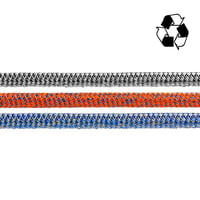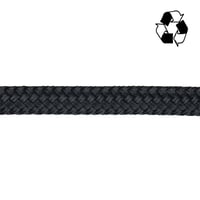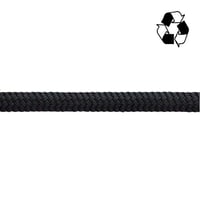-min.jpg?width=712&name=My%20project%20(90)-min.jpg)
Credit - Premiumropes
The issue of plastic waste has come to the forefront of public attention in recent years, with plastic bottles clogging our waterways and gathering as vast floating islands in our oceans. Now scientists and entrepreneurs across the world are scrambling to come up with solutions to the problem and find novel ways of recycling waste plastic. Premiumropes are no different and have recently launched their Eco range of ropes featuring recycled Polyester.
Premiumropes
Premiumropes are perhaps best know for their vast library of splicing tutorial videos, the best-selling book ‘Splicing Modern Ropes’ and their mobile app with step-by-step instructions. The Amsterdam based ropes producer and rigging workshop are also renowned for quality products and innovation. The latest development is the introduction of their Eco Ropes range, featuring recycled Polyester and bio-based Dyneema. Here we will look at recycled Polyester which is a key component of the Eco Ropes range.
Polyester
Polyester a favourite material for ropes, thanks to its low price point, good grip, and durability. Polyester can be used as a core material or cover material depending on the required properties of the line.
PET & rPET
PET (or Polyethylene Terephthalate to use the full name) is the most common form of Polyester. PET is used throughout the world to produce household items such food packaging & plastic bottles. Unlike some other plastics, PET is fully recyclable. Depending on the purity of the material, recycled PET (rPET) can be turned back into drinks bottles & packaging or used to make Polyester textiles. The majority of global rPET is produced from PET bottles.
-min.jpg?width=400&name=My%20project%20(92)-min.jpg)
Turning bottles into ropes
- The first step is the collection of plastic materials which come from various sources including industrial waste, household bins and environmental clean-up projects. This material must be sorted, washed and dried to remove impurities.
- Next, the material is shredded into granulate which is further washed and dried to form a clean base material.
- The PET granulate is then heated and spun to create filament fibres. These fibres are combined to create yarns for rope production.
- Finally the reels of recycled Polyester yarn are loaded onto specialised braiding machines for the production of the Premiumropes Eco lines.
Eco Cruiser
Eco Cruiser is the entry level offering in the Eco range with rPET core and cover. This line offers the same benefits of other double braid Polyester ropes being soft in the hand, durable, UV resistant and super affordable. Eco Cruiser comes in a range of attractive colours and a modern ‘melange’ design.

Eco Cup
Eco Cup is a step up from Eco Cruiser in terms of performance, featuring rPET cover and low stretch Stirotex core. Stirotex is Premiumropes’ own brand UHMWPE, renowned for its incredible strength, low stretch and UV resistance. Eco Cup is equivalent to the already successful S Cup.

Eco Dock
Eco Dock was the first Premiumropes line produced from 100% recycled plastic. It is ideal for mooring and anchoring. Eco Dock features good elongation characteristics to absorb shock loading in heavy weather conditions.

Eco Fender
This 24 plait single braid line is made from rPET fibres. The hollow braid construction makes this fender line easy to splice, and convenient for tying on to the guard rail.

Summary
With the launch of their Eco range, Premiumropes are already at the forefront in terms of manufacturing high quality yacht ropes from recycled material. But the development doesn’t stop here! The Amsterdam based rope producer is continuing to push boundaries and look for new opportunities to reduce waste and bring more circularity into the production chain. This company has never been afraid to innovate and we are excited to see what they will do next.
If you have any questions about Premium ropes, please feel free to email us at support@upffront.com, or click the link below to see our full range:


